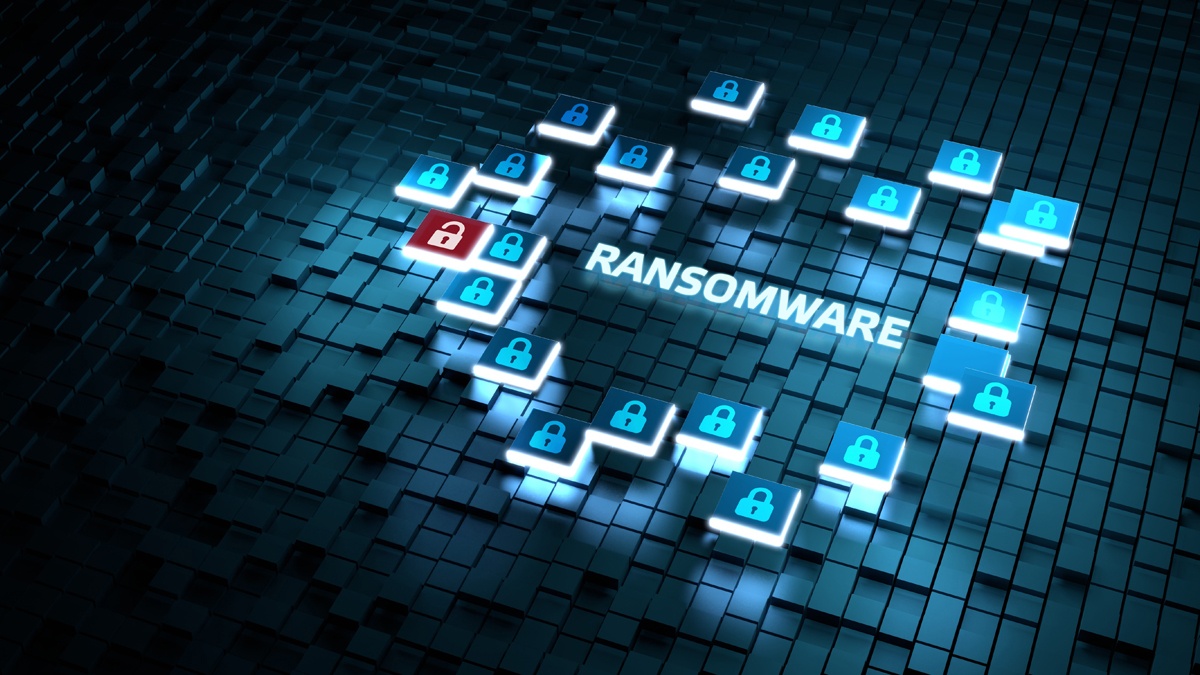Ransomware is one of the biggest threats to your business online. It’s a type of malware that uses encryption to hold your precious data and information at ransom. Learn what to do so you are protecting your business from ransomware.
It’s often designed to spread throughout your entire network, servers, and databases, so it can take down your entire organization.
The threat of ransomware continues to spread, costing businesses billions of dollars every single year.
What is Ransomware?
Ransomware is a form of cybercrime that uses malicious software to infect a computer and restrict access until a ransom is paid to unlock it. Think of it as a kidnapping situation, but instead of a person, your data is held hostage.
The FBI recommends not paying the ransom, since there’s no guarantee you’ll get your data back or gain access to your system again.
As a whole, ransomware attacks aren’t as common as they once were, but the financial impact of each attack is increasing. So, you’re less likely to experience an attack, but if your business is targeted you’ll have a larger financial burden.
According to a recent study, the recovery costs of ransomware attacks have nearly reached $2 million. Recovery costs can include data loss, ransom payments, higher insurance premiums, system repair, business disruption, and more.
Today, ransomware has become much easier to deploy. Cybercriminals no longer need specialized skills to write malware, instead, they can use malware kits or simply purchase and deploy premade malware.
There are multiple types of ransomware you’ll need to be aware of and protect your business from:
- Encryption. The most common form of ransomware encrypts your files and data and makes it inaccessible until given a decryption key.
- System lock. This completely locks you out of your system and a lock screen displays a ransom demand.
- Scareware. This is fake software claiming to detect a virus or problem with your computer and can result in endless popups or completely lock your computer.
- Doxware. This threatens to make sensitive company or private information public and often uses intimidation to meet ransom demands.
How Ransomware Can Enter Your Business
The main sources of ransomware are from email attachments and websites that have been compromised.
If you visit a website that’s been embedded with malware, then the software can download and install itself on your system automatically.
With email, users are tricked into opening an email attachment that installs the ransomware. This can be from a spam email with an attached Word or Excel file, or even malware disguised as a PDF.
It can be combined with phishing to get you or your employees to open the email, thinking it’s from a known contact.
Both of these methods require you, or an employee, to take an action that compromises the business. Often, you won’t realize your computer has been infected until you’ve been locked out and you see messages demanding a ransom.
How Protecting Your Business from Ransomware Attacks Can Help
In May of 2021, Colonial Pipelines was hit with ransomware that shut down portions of its pipeline and cost the company a $5 million ransom.
As you can see, ransomware can be debilitating to your business. The best way to avoid ransomware is to have a robust security plan in place before disaster strikes.
Here are a few of the best ways to protect yourself and your business:
1. Keep Regular Secure Backups of Important Files
One of the best ways to avoid the threat of ransomware is to ensure you always have a backup of your critical files. That way, if you do get infected with ransomware, then you can wipe your system clean and reinstall the uninfected versions of your files.
It’s also important to secure your backups, so there’s no point of access from the rest of your network. After all, there’s no point in keeping backups, if they can also be compromised in an attack.
2. Setup Strong Email Filtering and Spam Protection
Having strong email filtering and spam protection can prevent dangerous emails from ever reaching your employees. This stops spam emails from getting to the inbox.
You’ll also want to have regular email scanning to detect threats and filter any executable files, including new ransomware threats that haven’t been seen before.
You can also configure an email firewall to block known malicious IP addresses.
3. Keep Software and Systems up to Date
Beyond securing your business email accounts and inboxes, you’ll want to keep the rest of your software, firmware, network, systems, and apps up to date.
This ensures your entire business network and other software are always patched against the latest security threats that exist online.
You can also employ other online security best practices like minimizing employee privileges and access controls based on company role. Plus, whitelisting known programs, so malicious third-party software won’t be able to execute and run.
Some businesses even employ website blocking tools for employees connected to the network.
4. Educate Employees and Create Awareness
No matter how effective your email security tools and other protective measures are, your first line of defense is your employees.
It’s important to educate your employees and make sure they’re aware of current ransomware threats, recognize when social engineering is happening, and never open email attachments from unknown senders.
How MX Guardian Can Help Protect Your Business from Ransomware
While ransomware attacks can be difficult to detect and stop, MX Guardian can help.
Since email is one of the main entry points for ransomware, you’ll want to improve your email security, so you can always trust your inbox.
MX Guardian offers customized spam filtering and rules, protection against zero-day attacks, phishing and ransomware blocking, and more, to keep you and your business safe 24/7.
Sign up today for a full-featured 30-day free trial and help protect your business against ransomware attacks.
